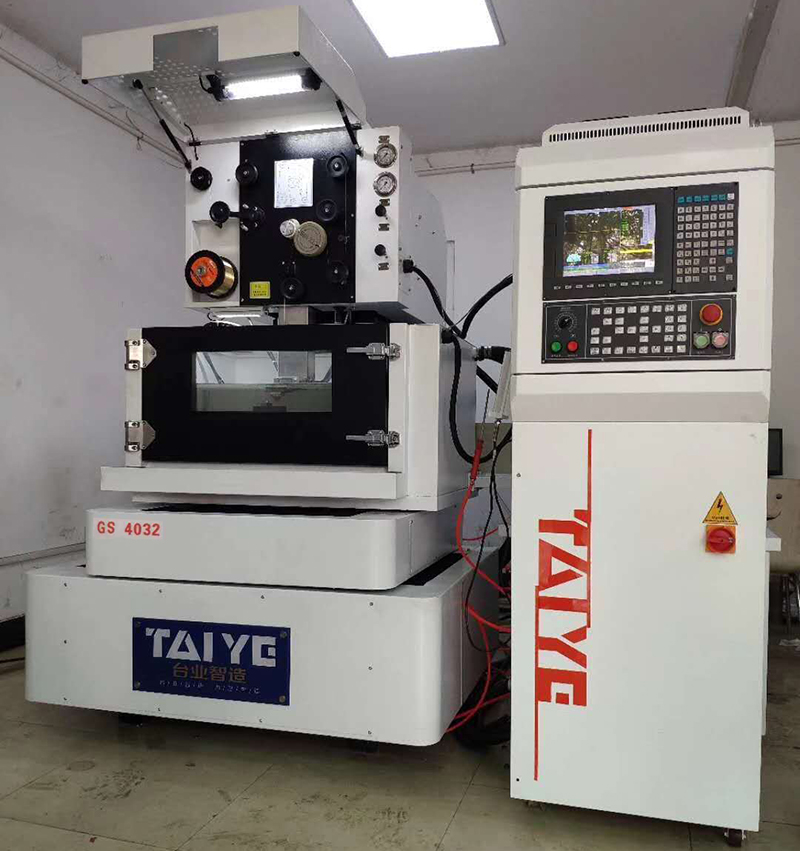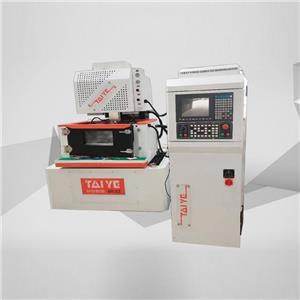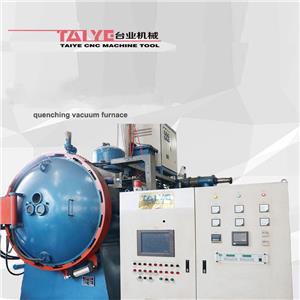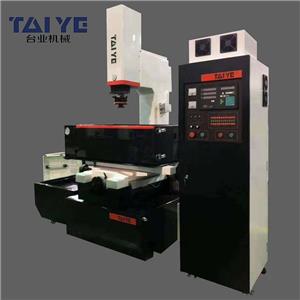Method of wire cutting machine operation
Matters needing attention in the operation of the wire cutting machine:
1. Precautions for workpiece clamping:
1.1. The rust and impurities must be cleaned up before the workpiece is clamped.
1.2. Before clamping, the installation surface of the cutting work piece such as template and template should be polished and trimmed with oil stone to prevent uneven surface, affecting clamping accuracy or interference with the lower nozzle.
1.3. The clamping method of the workpiece must be correct to ensure that the workpiece is straight and fastened. Imported pump valve
1.4. It is strictly forbidden to use sliding screws. The screw locking depth should be more than 8mm, and the locking force should be moderate, not too tight or too loose.
1.5. The pressure block should be clamped flat to ensure that the clamping parts are evenly balanced.
1.6. Be careful during the clamping process to prevent the workpiece (plate) from falling out of stability.
1.7. The clamping position of the workpiece should be conducive to the alignment of the workpiece, and be compatible with the stroke of the machine tool, which is conducive to programming and cutting.
1.8. After the workpiece (plate) is clamped, it must be checked again to confirm whether it interferes with the machine head, the inter-electrode line, etc.
2. Matters needing attention during processing:
2.1. When moving the worktable or the spindle, the moving speed should be correctly selected according to the distance to the workpiece to prevent collisions when moving too fast.
2.2. When programming, determine the correct processing technology and processing route according to the actual situation, and prevent the workpiece from being scrapped or cut off in advance due to insufficient processing position or insufficient edge strength.
2.3. It is necessary to confirm whether the program and compensation amount are correct before thread cutting.
2.4. Check whether the tension of the electrode wire is sufficient. When cutting the taper, the tension should be reduced to half of the usual.
2.5. Check whether the feeding speed of the electrode wire is proper.
2.6. Choose open processing or close processing according to the actual situation of the workpiece, and try to shorten the distance between the nozzle and the workpiece while avoiding interference. During close processing, the distance between the nozzle and the workpiece is generally 0.05 to 0.1 mm.
2.7. Check whether the jet selection is reasonable. Use high-pressure jets for rough machining and low-pressure jets for finishing.
2.8. Attention should be paid to observe and judge the processing stability when starting the cut, and adjust in time when defects are found.
2.9. During the processing, the cutting conditions should be inspected and supervised frequently, and the problems should be dealt with immediately.
2.10. When an abnormal short circuit or abnormal shutdown of the machine tool occurs during processing, the real cause must be found out and the correct treatment must be made before processing can continue.
2.11. When processing is suspended due to wire breakage, etc., after processing, it must be confirmed that there is no interference before processing can continue.
2.12 The modification of processing condition parameters must be carried out within the range allowed by the machine tool.
2.13. It is strictly forbidden to touch the electrode wire and the object to be cut during processing to prevent electric shock.
2.14. Do a good job of preventing the machining fluid from splashing out of the working box during processing.
2.15. It is strictly forbidden to rely on the machine tool box during processing, so as not to affect the processing accuracy.
2.16. Before cutting off the waste or workpiece, wait for the machine to observe. When cutting off, immediately suspend processing. Note that the waste or workpiece must be taken out before the workpiece table can be moved.
3. Other matters needing attention:
3.1. The opening and closing of the machine tool must be carried out in accordance with the relevant provisions of the machine tool, and illegal operations are strictly prohibited to prevent damage to electrical components and system files.
3.2. After turning on the machine, you must perform the action of returning to the machine origin (the electrode wire should be cut first) to make the machine calibration consistent.
3.3. When disassembling the workpiece (plate), pay attention to prevent the workpiece (plate) from falling out of stability.
3.4. After processing, clean up the debris on the work surface and the work box in time, and do a good job in the "5S" work of the machine tool and its surroundings.
3.5. Fixtures and workpieces (plates) should be properly rust-proof and placed in designated locations.
3.6. Make necessary records after processing.





